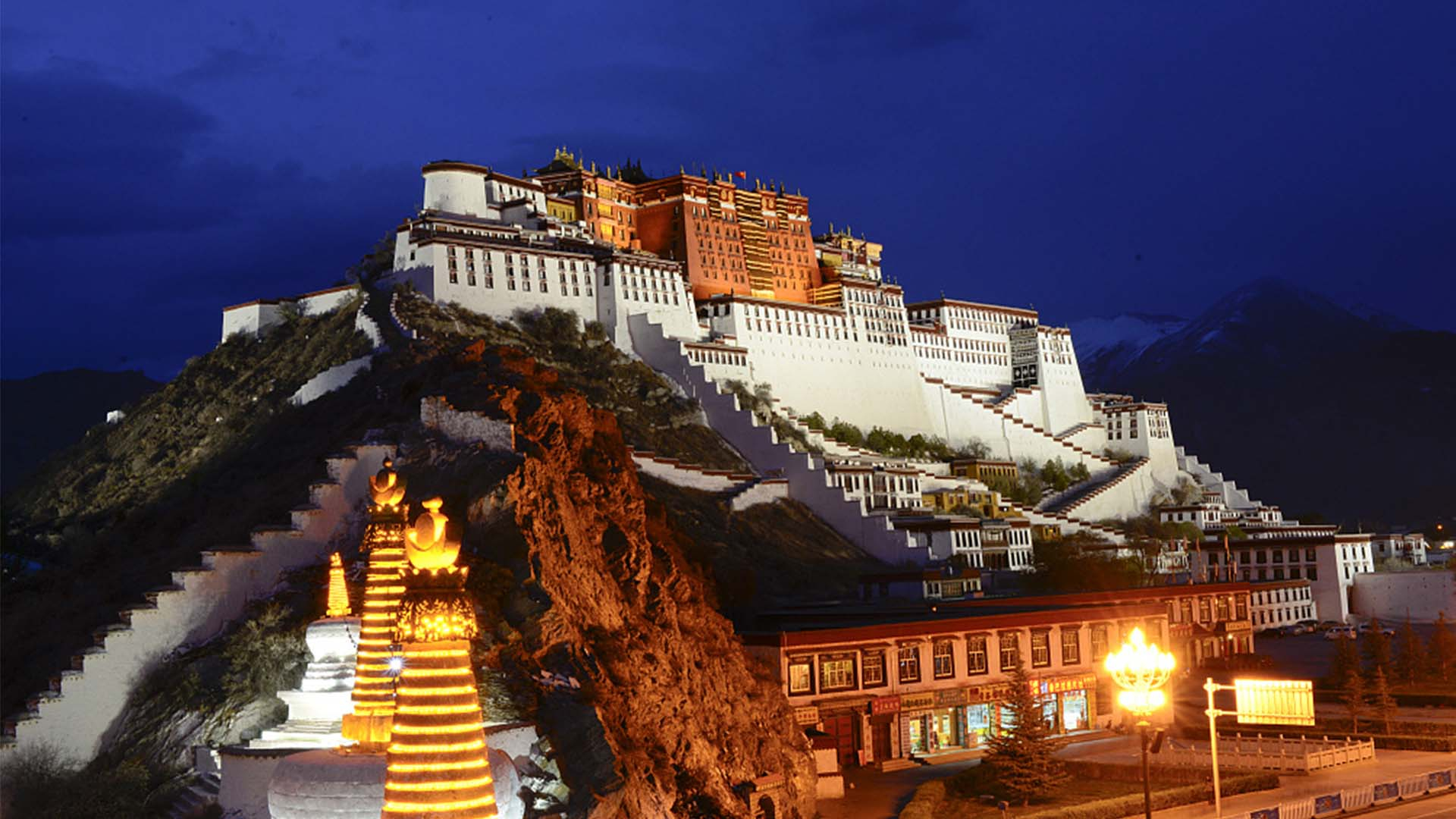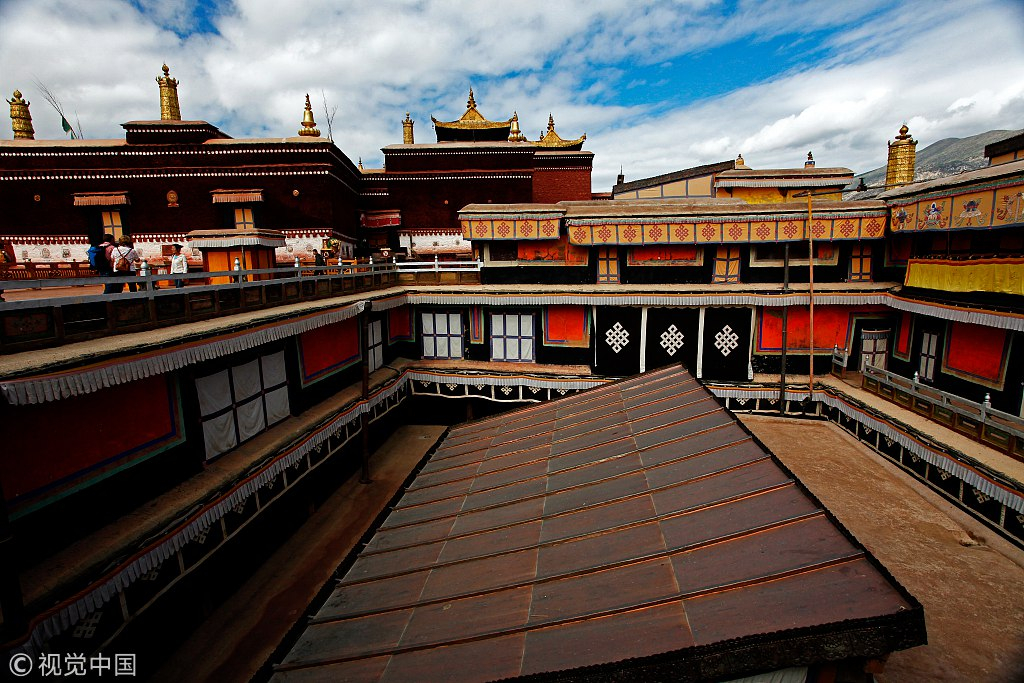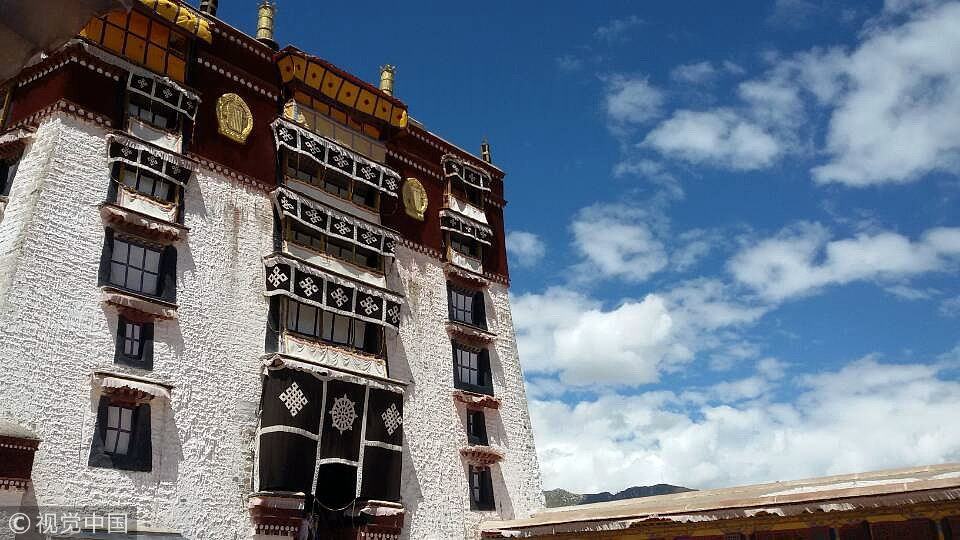
Culture China
21:49, 25-Mar-2019
Rooftop refurbished for landmark building in Tibet
By Wang Wei
02:25

In southwest China's Tibet Autonomous Region, the world-renowned Potala Palace has just received a facelift. A restoration, which lasted for several months, has focused on the golden rooftops of the imposing palace complex.
Bathed in the brilliance of highland sunshine, the golden rooftops of the Potala Palace are reasserting its glory after the restoration. As the highlight of the centuries-old structure, the rooftops also reflect the region's historical associations with surrounding areas.
"From here you see a view of the various rooftops of the palace complex. You can see they generally come in two forms. One is purely local in origin. The other is the Golden Top first adopted in Tibet during the 17th century. It's a blend of the architectural elements of Tibet and its neighboring regions. The towering ridge is especially distinctive. It is known as the Treasure Vase," said Jue Dan, director of the Potala Palace management office.

The Potala Palace in Lhasa City, Tibet Autonomous Region, China. /VCG Photo
The Potala Palace in Lhasa City, Tibet Autonomous Region, China. /VCG Photo
The golden rooftops are covered with bronze, gilded with high-carat gold. Their decorative elements combine the features of Tibetan, Han Chinese, Mongolian and South Asian cultures. The statuary and scripture calligraphy all attest to a culture of openness and diversity.
"The interlocking wooden brackets have their origin in the Han Chinese culture," Jue Dan said, "It serves to break the force of winds and have proved especially useful for the buildings on the plateau. But the colorful paintings and decorations, both in terms of motifs and techniques, are recognizably Tibetan."
The recent restoration was launched early last year, with funds the central government. It consumed more than 75 kilograms of gold and 320 kilograms of mercury.

Another view of the Potala Palace. /VCG Photo
Another view of the Potala Palace. /VCG Photo
"It would be impossible to finish the restoration without the support of the central government. So far some 31 million yuan have been spent to spruce up the five rooftops over there. For the project, we have commissioned master artisans well trained in traditional techniques," Jue Dan said.
The Potala Palace was first built during the Tang Dynasty (618-907) more than 13 centuries ago and was expanded to the present scale in the mid-17th century.

SITEMAP
Copyright © 2018 CGTN. Beijing ICP prepared NO.16065310-3
Copyright © 2018 CGTN. Beijing ICP prepared NO.16065310-3